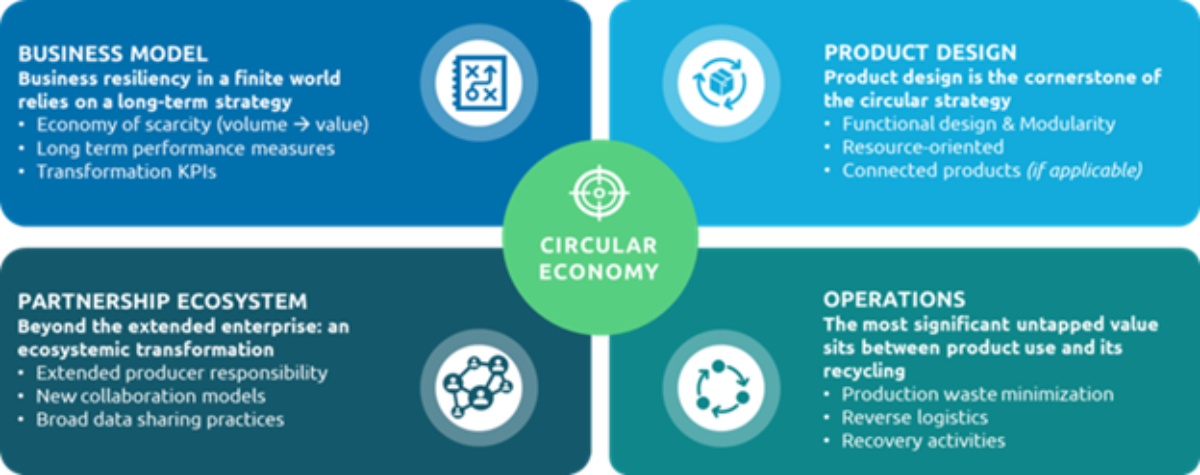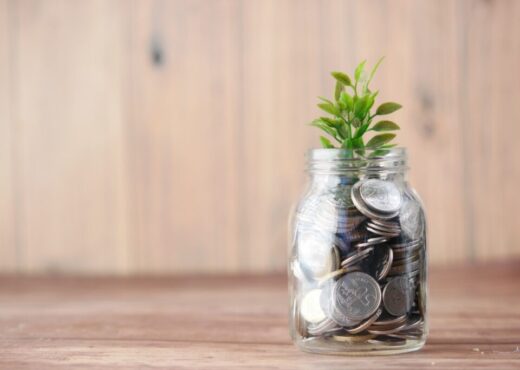
The decarbonation economy can only be circular
In this article, you’ll find my 5 key takeaways regarding the need to position a circular economy at the core of the decarbonation strategy to avoid a long-term catastrophe.
Meeting halfway: investments are focusing only on the acceleration of CRMs supplies to meet our net zero ambition
Some immediate ESG and geopolitical implications must already be addressed
The lack of coordinated strategy put resource preservation at risk
Circular economy, the missing piece of the puzzle for a durable decarbonation economy
Where to start with our RACES framework (Resources Awareness & Circular Economy Strategy).
The affordability and speed of energy transitions will be heavily influenced by the availability of critical mineral supplies, explaining the booming demand for CRM production to address our needs for renewable energy and climate technologies. In 2022, global spending on renewables were valued at $600 billion. Forecasts validate that this demand will continue to grow exponentially over the next decades.
Driven by this rising demand and high prices, the market size of key energy transition minerals doubled over the past five years, reaching $320 billion in 2022. Between 2017 and 2022, demand for minerals increased x1.5 for Copper, x6.7 for Lithium, x3.1 for Nickel, x1.9 for Cobalt, and x2.5 for Rare Earth Elements to respond to our desperate need for climate technologies.
Securing this paradigm change implies to free up capital investments at all levels in 2022 with a primary focus on mineral extraction, refining and manufacturing
+30% of investment in critical minerals development
+20% of investment in exploration spending – with a focus on lithium
Record investment of $1.6 billion (+160% y-o-y) in start-ups from venture capital
Over $20 billion of M&A transactions related to energy transition minerals (for long-term off-take, mining, refining and precursor materials)
Most prices began to moderate in the latter half of 2022 and into 2023 but remain well above historical averages. Equally, despite those heavy investments and many new projects future supply is far from assured due to ecosystemic risks of schedule delays or cost overruns that are accentuated by global economy downturn and recessions.

There are several environmental and social issues arising in relation to the extraction and exploitation of natural resources that industry players can already act on.
Environmental issues. Out of the 40 GtCO2e emitted yearly by human activities, the transformation of the mineral resources into goods and equipment by businesses account for 55%, i.e., more than the use of energy by final customers to run these goods, their homes and to travel, which only account for 45%. In addition, water consumption (x2 between 2018-2021) and waste production (5bn tonnes per year) are two major elements to monitor during the transformation of mineral materials.
Social issues. Some implications can render specific supply channels unacceptable to end customers. Major social risks can go as far as subjugation of local population, threats on livelihood and culture, gender inequality, forced displacements, migrations, modern slavery, child-labour and other violation of human rights.
Lack of diversification and monopoly of key actors also increases the dependency on the very few resource-rich countries, which will exacerbate geopolitical tensions (e.g., 3/4 of lithium, cobalt and rare earth element production is covered by just three countries in the world). Although there is domestic production of certain critical raw materials within the EU, in most cases the EU is dependent on imports from non-EU countries. This same level of dependency applies to production of the components built using these materials (e.g., 77% of electric vehicle batteries are currently produced in China). In addition, the supply of these raw materials comes from countries with low level of controls applicable to working conditions (e.g., the Democratic Republic of Congo is responsible for more than 70% of the global cobalt production).
We live in a world with planetary boundaries meaning that the planet is limited in the resources it can offer. As it currently stands, humankind’s use of resources requires more than 1.75 planets to sustain. Consequently, natural resources are being depleted at a rate that exceeds the Earth’s capacity for regeneration leading to potential exhaustion of reserves in the coming decades. At current growth rate, the reserves for hafnium, antimony, strontium will be depleted in the 2020s and the reserves for lead, gold, tin, chromium, zinc, silver in the 2030s.
Regarding CRMs, the issue is of a greater magnitude considering that these elements are “rare” in essence and that the demand is getting higher. A compound effect is that most of the consumption of CRMs is coming from other uses than for clean energy. Finally, current CRM strategies focus on the materials that are more in demand (e.g., Copper, Cobalt, Lithium, Nickel), though a lot of less-known elements are under supply risks (e.g., Gallium, Germanium). However, it is urgent to put those elements under the spotlights as they are critical in the manufacturing the technologies needed for the decarbonation of the economy.
The AIE identified nearly 200 policies and regulations across regions, with over 100 of these enacted recently (e.g., European Union’s Critical Raw Materials (CRM) Act, the United States’ Inflation Reduction Act, Australia’s Critical Minerals Strategy and Canada’s Critical Minerals Strategy…). However, most of these initiatives emphasize on diversifying the current supply chain, focusing primarily on the extraction, refining and manufacturing segments of the value chain.
Some recycling plants are planned to be built, but this remains very timid. This industry is yet to be created to obtain tolerable volumes of recycled materials at high quality level to achieve general resilience. Not embracing a long-term strategy with circular economy at the core, aiming at revalorizing products and materials throughout the lifecycle is putting the global economy at risk when clean energy capabilities will reach end of life.
The case of solar panel (cf. previous LinkedIn post)
𝗦𝗼𝗹𝗮𝗿 𝗽𝗮𝗻𝗲𝗹𝘀 𝗶𝗻 𝗮 𝗻𝘂𝘁𝘀𝗵𝗲𝗹𝗹
Average lifespan: 25-30 years
Composition: Glass fronts, aluminium frames, precious materials (e.g., silver, copper)
Value: Over 60% of the value is contained in 3% of the weight of the solar panels with some materials exposed to hashtag#sourcingrisks
𝗖𝗶𝗿𝗰𝘂𝗹𝗮𝗿𝗶𝘁𝘆 𝗶𝗻 𝘀𝗼𝗹𝗮𝗿 𝗽𝗮𝗻𝗲𝗹𝘀, 𝘄𝗵𝗲𝗿𝗲 𝗮𝗿𝗲 𝘄𝗲
Dismantling and hashtag#recycling processes for solar panels are complex
Infrastructure to hashtag#scrap and recycle solar panels is lacking (the world’s first factory will officially open in France end of June)
Solar recycling specialists like ROSI hope eventually to be able to extract and re-use 99% of a unit’s components – once solutions will be fully operational
𝗟𝗮𝗿𝗴𝗲 𝘃𝗼𝗹𝘂𝗺𝗲𝘀 𝗼𝗳 𝘀𝗰𝗿𝗮𝗽 𝗮𝗵𝗲𝗮𝗱
First generation of solar panels achieve their end-of-life
In 2021, the world’s solar energy generation capacity grew by 22%
In 2030, 4 million tonnes of scrap are expected from solar panels
In 2050, 200 million tonnes of scrap are expected from solar panels (i.e. x50 vs. 2030)
Circular economy is not a new concept. However, its application is complex, requiring a holistic approach across four dimensions to support the creation of new industrial value chains: business model, product design, operations, and partnership ecosystem.
To meet these new expectations and the resulting circularity process requirements, the entire value chain needs to change. From designing products to include new functionalities to their end-of-life management, it is imperative that companies scale up the technological solutions in the circular economy to guarantee an economically viable model.
Physical (3D printing, Robotics, Nanotechnologies, etc.) and digital (AI/ML, Cloud & Edge, Marketplace & Platforms, IoT, Blockchain, Digital Twins, etc.) technologies to develop reusability solutions in product design and operations.
Biological technologies (Synthetic Biology, Bio-Based Materials, Bioenergy, etc.) are the next frontier, helping tackle issues at the two extremes of the lifecycle by creating alternative materials and accelerating the standardization of chemical recycling.
Our research with the National Institute of Circular Economy (INEC) warns that if France’s economy remains predominantly linear, implementing its low carbon strategy will increase the cumulated €.criticality of metals and minerals by a factor of 16 at the country’s scale by 2050. Applying circular economy starting from the assessment via our RACEs approach we demonstrated that deploying a holistic circular economy strategy can help resource sourcing risk exposure by 75% between 2020 and 2050.
Build your strategy through different steps:
Resource awareness and vision to pre-assess vulnerability areas in your current AS IS strategy
Circular Business Strategy to identify opportunities using the 16 Circular Business Segments (CBS) and prepare robust TO BE scenarios
Quantification of criticality and business case to make decisions, but also measure progress over time
Transformation plan with tangible action items and implementation examples
Interested in discovering more about our RACEs approach? No matter your starting point, we can help you turn resource criticality into business opportunities to implement circularity at each step of your value chain and gain resilience.

